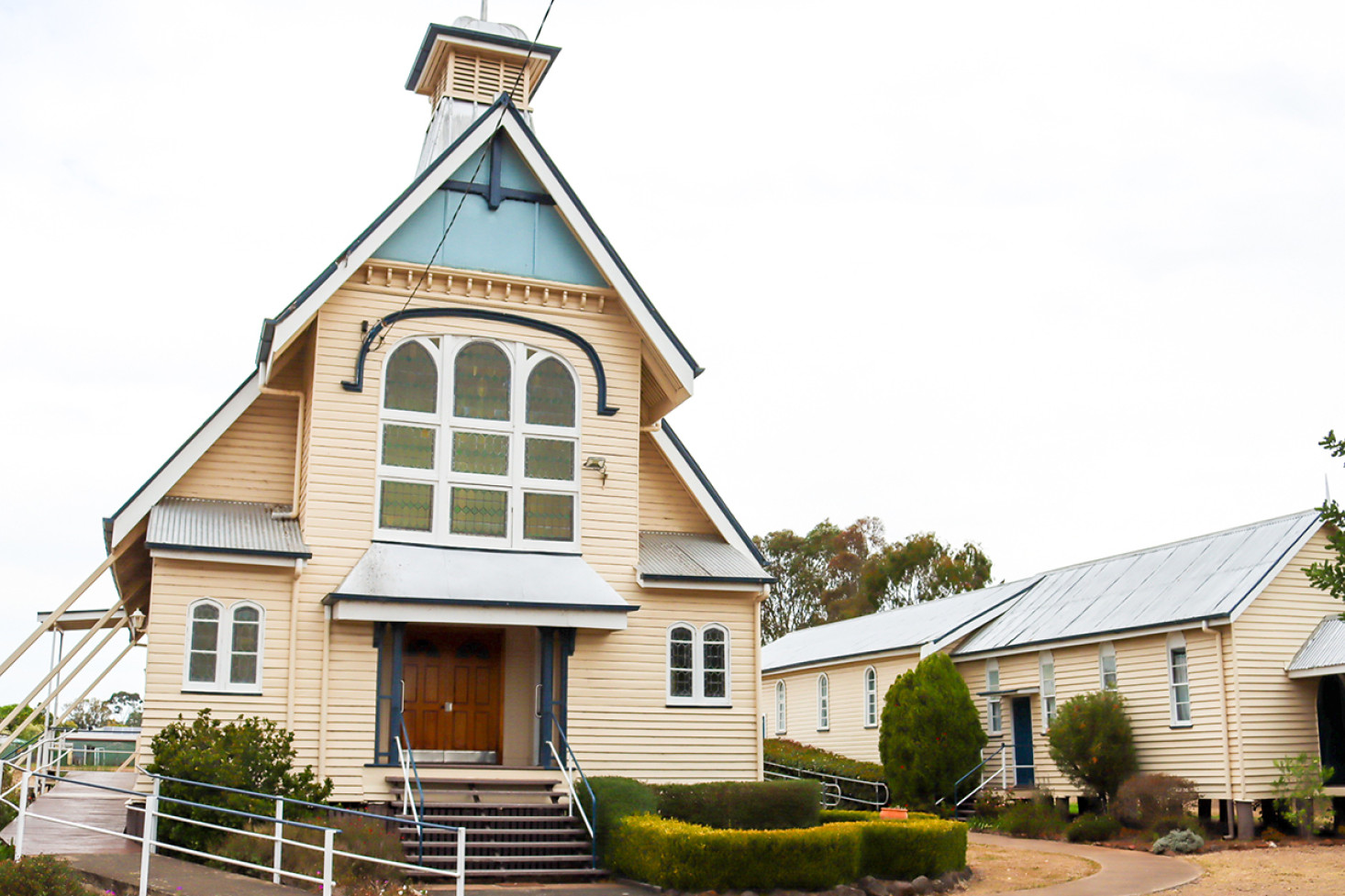Community & Business
8 October, 2024
Clifton and District Historic Churches - St Andrews Clifto
In the third instalment of Clifton and District Historic Churches - Clifton’s places of worship of the past and present, we visit St Andrews Presbyterian Church.

Clifton’s Presbyterian Church pioneer beginnings
In 1876 Clifton was basically a railway hamlet with a population of 48.
By 1891 Clifton, with a population of 278, was the fifth largest town on the Darling Downs.
The town had three stores, three hotels, a bank branch, four churches, a State School, Post Office, School of Arts and 14 tradesmen.
It is generally believed that the Gammie brothers, very early settlers on Clifton Station, were the first Scots Presbyterians in the area.
Rev. Thomas Kingsford and Parson B. Glennie of the Anglican Church were two great pioneers who travelled the Downs by horse as they counseled, encouraged, baptised, married and buried on their way through the countryside.
It is believed that the first Presbyterian Church service held in the Clifton area took place in the King’s Creek home of Robert Carse Bishop.
The first Clifton Presbyterian Church was opened in Gammie Street in 1890, free of debt, and held one Sunday service per month.
It was expected to contribute £30 sterling towards the stipend of the Allora Charge Minister.
Financial Problems
Rev. James Morrow was appointed to the Allora Charge (Clifton then part of the Allora Charge) but tragically died at the young age of 37 years in 1893.
“The congregation, with other friends in the town and district, erected a memorial headstone on his grave in the Allora cemetery at a cost of 49 pounds 9 shillings and ninepence. There is no record of any financial assistance given to his widow and children,” according to Rev. Gillanders (Allora, Clifton minister 1973.)
His replacement Rev. John Watson came, from Goondiwindi in 1894 and as Goondiwindi could not pay his arrears of stipend he brought their horse and buggy with him!
The Allora Charge (including Clifton) deteriorated rapidly financially, spiritually and in numbers.
In 1896 Presbytery rebuked all parties, including the minister.
Mr Watson offered to resign after being paid his arrears of stipend, which was finally paid when a church was mortgaged!
By 1897 there was no organised congregation at Clifton and Rev. Watson left for Victoria or America in August 1897.
From Gammie to John Street, a new beginning
Clifton sold the church site in Gammie Street in around 1906 for £45 and bought an acre of land in John Street.
The old church was moved from its site to the present position by a team of sixteen horses.
The small church moved from Gammie Street eventually proved too small for the growing congregation and plans were put in place to build a bigger church next to the old building.
A noticeable feature of the new church is its great height compared to its size.
This ensures good ventilation in the church proper, which seats 300.
The floor has a slope from the main entrance to the back, which allows a full view from every seat.
A small round tower on the front of the roof gives the building a striking appearance.
The building was opened on Wednesday, 3rd March 1909 by the Moderator-General of the Presbyterian Church of Australia, the Rt. Rev. Peter Robertson and the attendance exceeded 300.
The Clifton Church progressed rapidly within the next two years and in 1911 some 55 Clifton families asked Presbytery to proclaim them a separate charge with right to call their own minister.
Rev. Donald McLennan took up the Clifton position and the first wedding in
the new church of Mr and Mrs W. Bishop took place on 7th April 1909.
By 1920 the financial position of the Clifton charge had deteriorated and the congregation asked to be united again with Allora.
A much loved minister of the Allora charge was Rev. Alfred Hadden who, despite poor health, was Clifton’s minister for over thirty years until his resignation in 1956 after prolonged illness through most of 1955 (Tuberculosis).
During World War II it was decided that because of blackout regulations services would be held in the afternoons and slit trenches were to be dug in the church grounds.
While the extreme height of the John Street church was one of its most impressive features the height also caused a major concern to the congregation during times of strong winds.
The timber building creaked and groaned and it was observed that the upper part of the building moved by 12 inches (30 cm).
To remedy the problem, Engineer Ivan Watts suggested the construction of external buttresses to provide additional support.
Greg Saville’s engineering business promptly constructed metal beams to the design requirements of Ivan Watts and the buttresses were added some time during the 1980s.
While the buttresses of St. Andrews in Clifton may not be as impressive as the famous flying buttresses of Notre Dame Cathedral in Paris, the Clifton congregation appreciates their construction, especially during strong winds.
On the occasion of Centenary Day in 2009 Session Clerk, Greg Saville remarked, “With the demolition of so many church buildings we are truly fortunate to have seen this one recently renovated, and we pray that it might continue to be a place of blessing for many years to come.”
The Clifton Courier would like to thank Greg Saville for his assistance in compiling this short history of Clifton’s St. Andrew’s Church.


